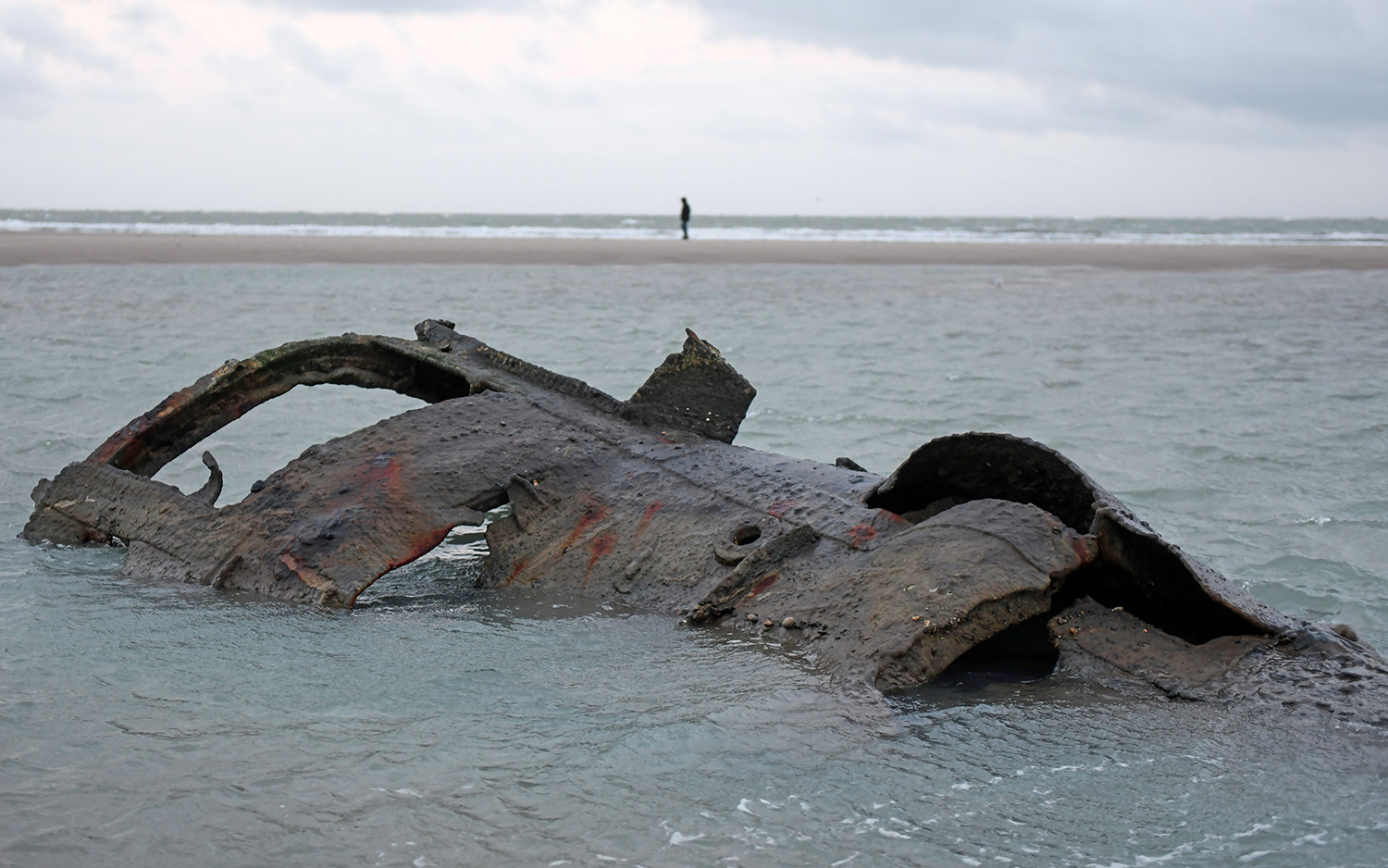WWI German Sub Spotted Off French Coast, 100 Years After Its Crew Surrendered

More than 100 years ago, a German crew aboard a submarine during World War I mistakenly ran aground in northern France. The 26 Germans promptly surrendered and abandoned the submarine, which completely sank into the sandy muck by the 1930s.
But now, shifting sands are slowly revealing the submarine, officially known as UC-61, and turning it into a tourist attraction, according to the BBC.
Since December 2018, two sections of the submarine have been visible at low tide on a beach in Wissant, a city near Calais.
But this isn't the first time beachgoers have gotten a glimpse of the submarine, which sank in July 1917. [Photos: WWI-Era German Submarine Wreck Discovered Off Scotland Coast]
"The wreck is visible briefly every two to three years, depending on the tides and the wind that leads to sand movements," Bernard Bracq, the mayor of Wissant, told the BBC. "But [get] a good gust of wind, and the wreck will disappear again."
Others, however, remain more optimistic. Vincent Schmitt, a local tour guide, said that strong winds and tides could reveal even more of the WWI sub. "All the residents of Wissant knew there was a submarine here, but the wreck is mostly silted and therefore invisible," Schmitt told the BBC. "Pieces reappear from time to time, but this is the first time we [have] discover[ed] so much."
During World War I, German submarines — called U-boats — sank hundreds of Allied vessels. Before it ran ashore, UC-61 is thought to have sunk at least 11 ships, either by laying mines or shooting torpedoes, the BBC reported.
Sign up for the Live Science daily newsletter now
Get the world’s most fascinating discoveries delivered straight to your inbox.
On its last mission, UC-61 left Zeebrugge, Belgium, with the intention of laying mines in Boulogne-sur-Mer and Le Havre, France. But the sub never got a chance to do that. Instead, its crew flooded and scuttled the sub before they waved the white flag to the French.
- Killer Chemistry: The Chemical Weapons of World War I (Photos)
- Photos: British Warships from WWI and WWII Discovered Near Norway
- The Science of World War I: Communications
Originally published on Live Science.

Laura is the archaeology and Life's Little Mysteries editor at Live Science. She also reports on general science, including paleontology. Her work has appeared in The New York Times, Scholastic, Popular Science and Spectrum, a site on autism research. She has won multiple awards from the Society of Professional Journalists and the Washington Newspaper Publishers Association for her reporting at a weekly newspaper near Seattle. Laura holds a bachelor's degree in English literature and psychology from Washington University in St. Louis and a master's degree in science writing from NYU.









